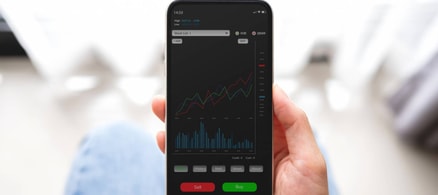The short version
- “Sell-side” analysts work for an investment bank or broker that “sells” financial advisory services and products to its clients.
- “Buy-side” analysts work for an asset manager like a mutual fund provider, hedge fund, pension fund or insurance company.
- These analysts may not always be able to predict the market accurately or may face pressure to agree with other analysts to preserve their reputations.
- While analysts know their industries well, you should use their recommendations as a complement to your own research.
Meet Your Retirement Goals Effortlessly
The road to retirement may seem long, but with WiserAdvisor, you can find a trusted partner to guide you every step of the way
WiserAdvisor matches you with vetted financial advisors that offer personalized advice to help you to make the right choices, invest wisely, and secure the retirement you've always dreamed of. Start planning early, and get your retirement mapped out today.
Get StartedWhat are equity analysts & what do they do?
Equity research analysts are skilled finance professionals responsible for writing research reports on companies within a specific industry for their firm’s clients.
Research professionals spend their time:
- Speaking with the management teams
- Reading annual reports
- Creating financial models/ forecasts
- Attending industry conferences
- Publishing research letters outlining their perspectives on individual companies
All this work is done to determine operating, financial and share price projections and to assign “buy,” “hold,” or “sell” recommendations.
Stock research started as a way for investment brokerages or banks to differentiate themselves. These firms bundled trading and analysis products, letting institutional investors buy equity trades while getting free research (often for the companies they were trading).
While the industry has declined since the 2008 financial crisis, investment banks, stock brokerages, and boutique research firms employ approximately 10,000 analysts across the U.S.
The two types of equity research analysts
There are two types of equity research analysts: Sell-side and buy-side. While they both do similar work, the purposes of the roles can be very different.
Stop overpaying for home insurance
Home insurance is an essential expense – one that can often be pricey. You can lower your monthly recurring expenses by finding a more economical alternative for home insurance.
SmartFinancial can help you do just that. SmartFinancial’s online marketplace of vetted home insurance providers allows you to quickly shop around for rates from the country’s top insurance companies, and ensure you’re paying the lowest price possible for your home insurance.
Explore better ratesWhat is a sell-side equity research analyst?
Sell-side research analysts are employed by investment banks or stock brokerages such as Goldman Sachs, JP Morgan Chase or Morgan Stanley. Their clients tend to be active mutual fund portfolio managers, hedge funds, pension funds and other institutional investors.
These research analysts work on the “sell-side.” This means they work for an investment bank or broker that “sells” financial advisory services and products to its clients. Sell-side analysts pick a certain number of companies to cover within a specific industry and can add new companies as they see fit.
Sell-side analysts gather information and write company research reports. They also play a significant role in facilitating meetings between interested investors and corporate management teams.
Becoming a sell-side analyst requires strong accounting, financial modelling, and communications skills; however, many sell-side analysts come from broad backgrounds like engineering, the sciences or history.
In 2018, the financial regulation MiFID II was established in the European Union (EU). It requires sell-side equity research providers to develop a separate price for their research outside trade execution services.
These changes drove a widespread reduction of research coverage across the traditional brokerage industry. It also helped to establish more dedicated boutique research providers.
What Is a buy-side equity research analyst?
Buy-side analysts work for an asset manager like a mutual fund provider, hedge fund, pension fund or insurance company. Their clients are each company's portfolio managers responsible for executing the firm’s investment strategies.
These analysts are on the “buy-side” because they work with asset managers who “buy” shares of individual companies. A buy-side analyst also chooses a certain number of companies to cover that pertain to the investment mandate of the portfolio manager they support.
Becoming a buy-side analyst typically requires a few years of experience working on the sell-side. This is where young analysts learn how to do the job.
Why investors should critically approach analyst ratings
Wall Street values research analysts for their expert knowledge of individual companies and their unique ability to access corporate management teams. So you might be tempted to let the analyst community guide your investment decisions as well.
Despite their skills, investors should approach the outputs of the stock research community critically for several reasons.
1. Research analysts have shaky track records of being right
Despite how hard analysts work to deeply understand the companies they focus on, they have a mixed track record for accurately predicting company performance. While some analysts have a history of solid performance, many don’t.
In 2021, for example, the top analysts had a collective prediction success rate of 82.7%, with an average return of 13.95%. All other analysts had an average success rate of 48.02% and an average return per rating of only 0.16%.
The S&P 500’s 2021 return was approximately 27%, which means you would have been far better off investing in the broader market instead of following the recommendations of even the top analysts.
More: How to invest in the S&P 500 index
2. Research analysts face many conflicts of interest
Some sell-side analysts can approach their work as means of helping their firm drive trading revenue instead of being fundamentally research-focused. This can mean that research reports are written more as “sales material” for equity salespeople. There may also be implied pressure on the analyst to create favorable profiles of the companies the bank may be advising in other capacities (M&A or IPOs).
This is why it’s uncommon to see a “sell” rating from a sell-side analyst. Doing so could jeopardize their firm’s relationship with corporate management teams, reducing the likelihood of future investment banking business. For example, in 2017, there were 11,147 analyst ratings on S&P 500 companies, but only 5.2% were “sell.”
On the buy-side, conflicts of interest come in different forms. These analysts commonly have large holdings of the funds they support (which tend to have positions in the companies they follow). So if they portray their covered companies favorably, it can lead to better fund performance.
Like the sell-side, buy-side analysts also must access corporate management teams. So there are similar incentives to maintain friendly relationships that could be hurt by negative ratings/reports.
Lastly, both the buy and sell sides might underestimate the earnings of the companies they follow to improve relationships with management teams. Over the past five years, 72% of the S&P 500 beat analyst earnings estimates, but analysts tend to reduce their forecasts leading up to earnings releases.
This evidence suggests analysts could be deliberately making it easier for companies to beat earnings estimates. This makes management teams look better, improves stock performance following earnings releases and helps companies maintain “buy” ratings.
3. Research analysts have reputations that they're looking to protect
Lastly, analysts face risks to their careers and reputations for being wrong,. So they might produce similar reports or avoid being too far away from the consensus. That way, no individual analyst is singled out for being way off base. These practices maintain personal credibility and the credibility of their firm.
The bottom line
There’s no question the work of the equity research analyst community receives a lot of attention and carries a lot of weight. But it’s important to be critical of their reports and perspectives.
One of the most effective ways of using analysts in your investing process is by focusing on their understanding of the industries they follow. That way, you get a much deeper understanding of an industry far faster than you would have otherwise. You can also use their research to see if you've overlooked anything as you do your own due diligence.
Further reading:
Sponsored
Follow These Steps if you Want to Retire Early
Secure your financial future with a tailored plan to maximize investments, navigate taxes, and retire comfortably.
Zoe Financial is an online platform that can match you with a network of vetted fiduciary advisors who are evaluated based on their credentials, education, experience, and pricing. The best part? - there is no fee to find an advisor.










